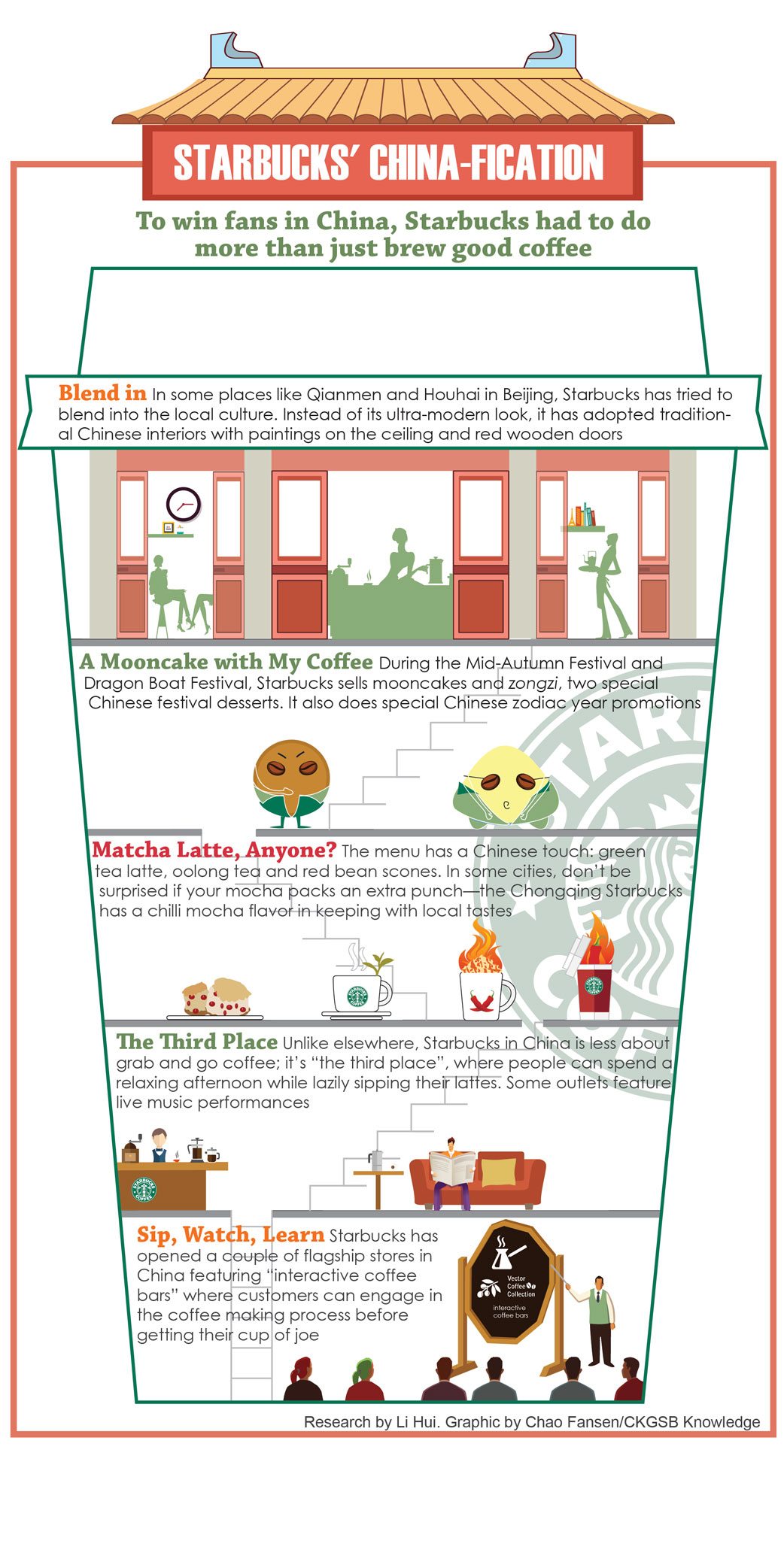The success of Starbucks in China has to do with things beyond just coffee. To win fans, it has had to localize not just its brews, but its hiring and retention policies as well.
China has a long and rich tea drinking culture dating back thousands of years. Even today, tea plays a huge role in the daily life of Chinese people. Wherever you look, you’ll find people carrying tall flasks of green tea as they go about their busy day. A typical Chinese workplace may or may not have a coffee machine, but not providing green tea would be a sacrilege.
Despite the strong tea drinking culture, an increasing number of Chinese people, mainly overseas returnees, the upwardly mobile, and the young and curious, are taking to coffee with enthusiasm.
The Seattle-headquartered Starbucks was one of the first movers in China. It first landed in China in 1999 and has been expanding at a furious pace ever since. By far, Starbucks has built over 1,600 stores in 90 Chinese cities. Wang Jingying, President for Starbucks Greater China, told the media that in 2014, Starbucks had been opening one new store each day, and that in future, they will set a goal to shorten the timespan to 18 hours.
Starbucks currently sits at the top of the coffee chain pecking order in China. According to data from Roland Berger, Starbucks dominates 60% of the Chinese coffee market, a slight decline from the previous 70%, while latecomer McCafe (McDonald’s cafes) and Costa Coffee have a market share of 13% and 11% respectively. Despite the drop, 60% of China’s market is still humongous. So how did Starbucks get there? How did it turn a nation of tea drinkers into coffee lovers?
As Starbucks Chairman and CEO Howard Schultz told CNBC, “We have established Starbucks as, not only the leading provider in coffee, but also a brand of choice and luxury in China.” Chinese customers love to go to Starbucks not just to get their caffeine fix: unlike other countries, Starbucks has created a premium image in China. Holding the white paper cup with the green mermaid logo is considered an important differentiating symbol in terms of status.
Besides, in the minds of consumers Starbucks is “the third place”, a place outside of home where one can lounge around and relax. “The things happening in a Starbucks China store… because there is no meeting places, they are living in places that are small, but they have a long commute, so the relevancy of the third place and the sense of community and the iconic nature of Starbucks in China has changed the way people perceive the brand,” Schultz said during a recent earnings call. So unlike Americans who go to Starbucks for a grab-and-go coffee or to work on their laptop over a hot cup of coffee the Chinese are more likely to lazily linger on over their mochas as they sit on the leather couches and bond with friends. At select Starbucks outlets, they can even enjoy live band performances.
It is widely acknowledged that Starbucks has done a good job in terms of conquering the Chinese palate. Besides the conventional lattes and mochas, the Starbucks menu features China-centric items like green tea lattes and red bean scones. During Chinese festivals, Starbucks goes one step further: during the Mid-Autumn festival and the Dragon Boat Festival, Starbucks promotes their own version of mooncakes and zongzi, the traditional desserts strongly associated with these festivals. During Chinese New Year, Starbucks sells mugs and customized reward cards and gift cards featuring the Chinese zodiac animal of the year. In regions with rich local cultures, Starbucks also does occasional regional localization: the Starbucks in Chongqing, a city known for spicy food, offers a spiced-up Chili Mocha!
But getting to the pole position also needs a very strong and stable team and recruiting, and particularly retention, in China was a challenge for Starbucks: Chinese parents didn’t view a career as a barista as particularly desirable for their kids in the long term. To tackle this problem, Starbucks decided to communicate its values to not just employees, but also their parents and grandparents, who are important stakeholders in career decisions in a country like China where family values are held high. So every year, Starbucks CEO Howard Schultz flies down to China to hold annual meetings with the parents or even grandparents of the employees. In a recent earnings call, he said, “…[W]e do that because we’re trying to recognize that we need to describe who we are and pay deep respect to the heritage of the family unit and to tell our story and make sure the parents and grandparents know what we are trying to do to grow the company and take care of your people, take care of your children.”
Want to know what else Starbucks did to conquer this tea-drinking nation? Click on the infographic below.





















